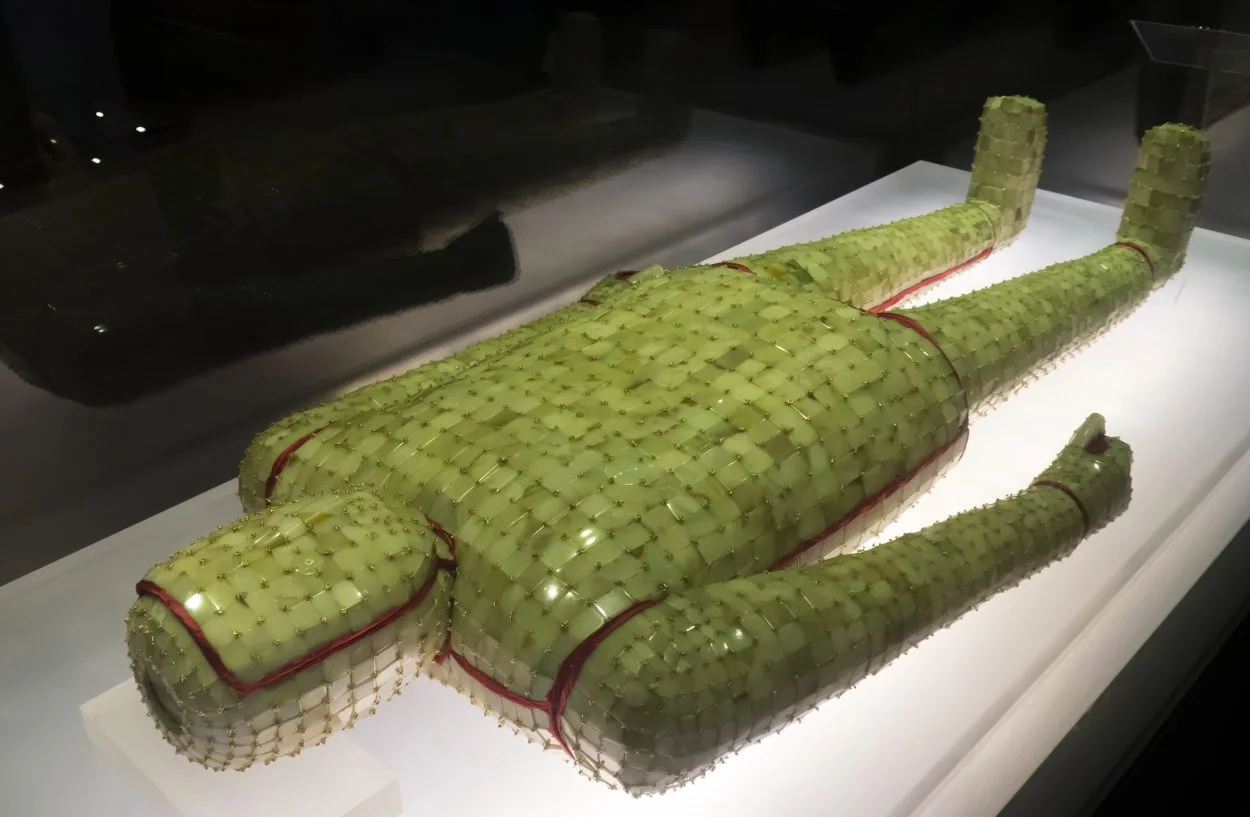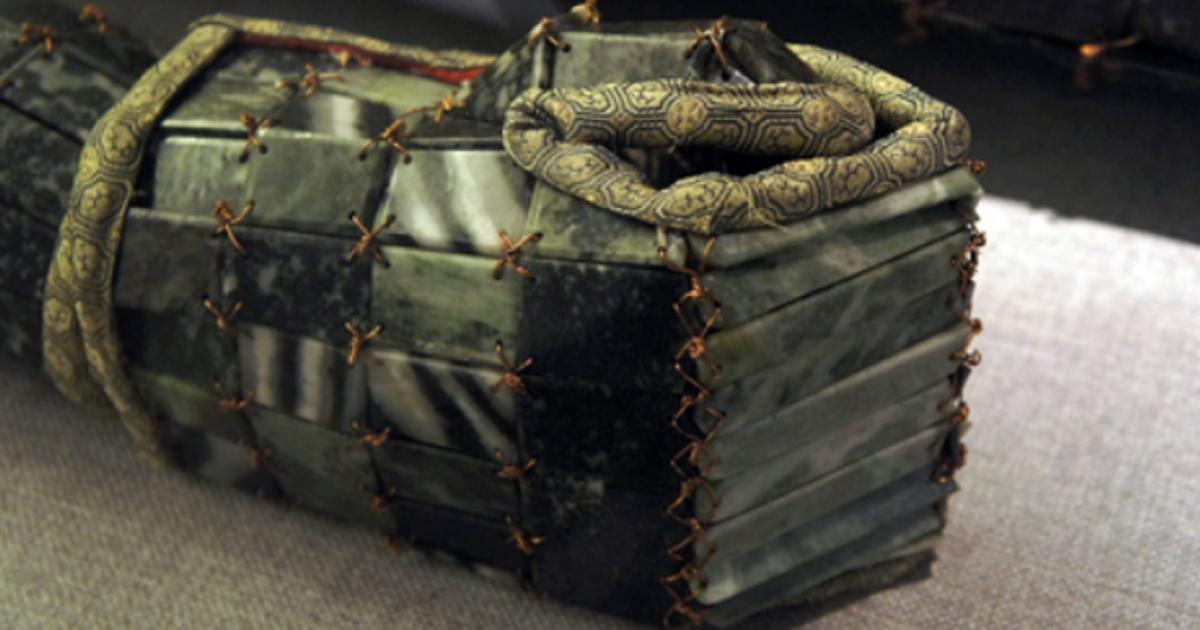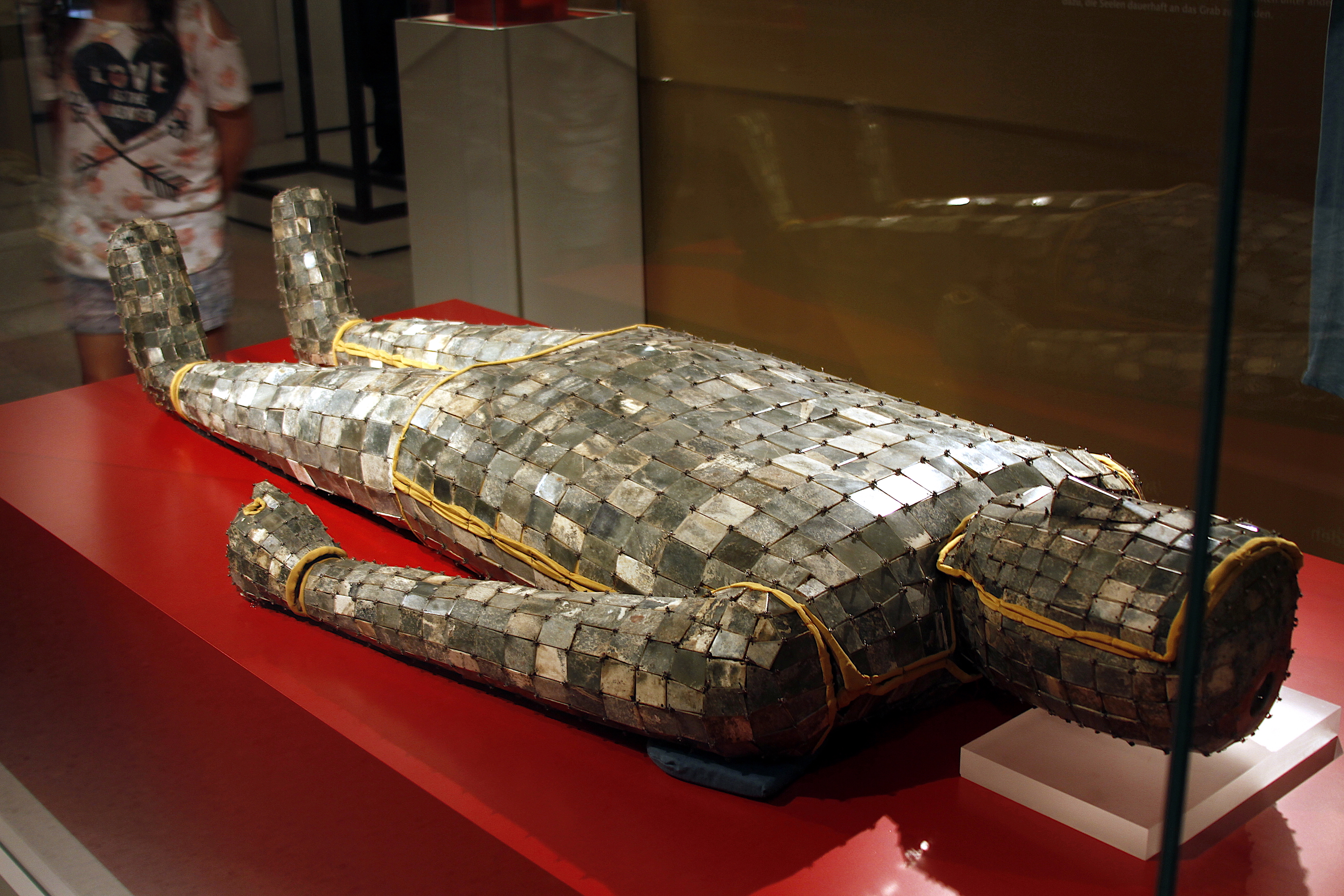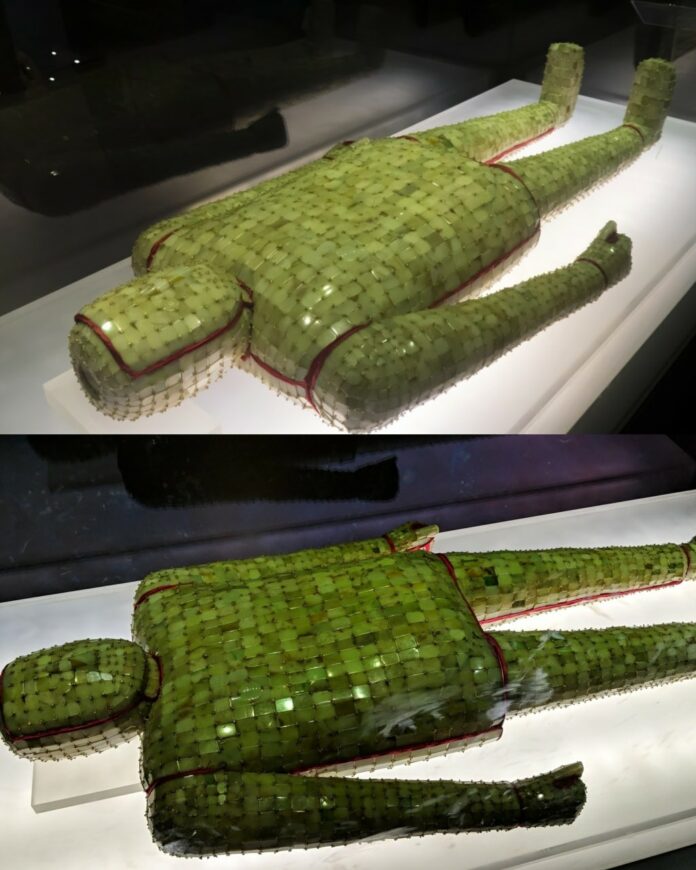In the Xuzhou Museum of Jiangsu Province, China, one of the most remarkable national treasures on display is a 1.74-meter-long jade suit consisting of 4,248 individual pieces. This extraordinary artifact, dating back to the Western Han Dynasty (202 BC-AD 8), is not only the oldest but also the largest jade suit ever discovered. Its intricate craftsmanship and cultural significance make it a true testament to the ingenuity and sophistication of ancient Chinese artisans.
Exceptional Jade Suits of the Han Dynasty

Apart from the remarkable jade suit found in Xuzhou, there are two other significant jade suits that have been unearthed in Hebei Province. One was discovered in the tomb of Liu Sheng, Prince Jing of Zhongshan, and consists of 2,498 jade plates. The other belonged to Liu Xiu, Prince Huai of Zhongshan, and contains 1,203 pieces of jade. These three jade suits are the only known examples that have survived from the Han Dynasty, making them invaluable cultural relics.
The Xuzhou Jade Suit: A Masterpiece of Craftsmanship
The Xuzhou jade suit, with its 4,248 pieces, is the oldest and largest of the three. The jade, mined from the famous jade-producing region of Hetian in Xinjiang Uyghur Autonomous Region, was meticulously crafted into a variety of shapes, including squares, rectangles, crescents, and triangles. Each piece is only 1 millimeter thick and ranges from 1 to 9 square centimeters in size. The thousands of jade plates are held together by gold threads, with a total weight of 1,576 grams.

The Discovery of the Xuzhou Jade Suit
The discovery of this national treasure is attributed to the persistence and dedication of Wang Kai, the curator of the Xuzhou Museum and an expert on the Western Han Terracotta Warriors. For years, Wang frequented a 60-meter-high hill east of Xuzhou, known as “Lion Mountain,” in search of archaeological treasures. His efforts were finally rewarded when a cellar used for storing sweet potatoes led to the excavation of the tomb that housed the jade suit.

The Identity of the Tomb’s Occupant
Despite the impressive nature of the jade suit, the identity of the tomb’s occupant remains a subject of debate among experts. Two main theories have emerged: the first suggests that the occupant could be Liu Yingke, the son of Liu Jiao and nephew of Liu Bang, who succeeded as Prince of Chu in 178 BC but died four years later. The second theory proposes that the occupant might be Liu Wu, the son of Liu Yingke, who inherited the title in 174 BC but later joined the Rebellion of the Seven States against the Han Dynasty.
Significance and Legacy

The Xuzhou jade suit is a true masterpiece of ancient Chinese craftsmanship, showcasing the technical prowess and artistic vision of the Han Dynasty artisans. Its discovery has shed light on the cultural and political dynamics of the time, while also highlighting the enduring significance of jade as a symbol of status and power in traditional Chinese society. The preservation and display of this national treasure at the Xuzhou Museum serve as a testament to the rich cultural heritage of China and its continued appreciation by scholars and visitors alike.
Conclusion
The jade suit discovered in Xuzhou is a remarkable and awe-inspiring artifact that not only showcases the exceptional craftsmanship of the Han Dynasty but also holds profound cultural and historical significance. Its existence is a testament to the ingenuity and dedication of the ancient Chinese artisans who dedicated countless hours to its creation. As one of the few surviving examples of its kind, the Xuzhou jade suit stands as a testament to the enduring legacy of Chinese cultural heritage and the ongoing efforts to preserve and celebrate the country’s invaluable treasures.
